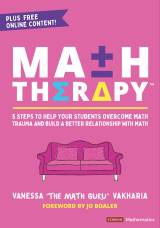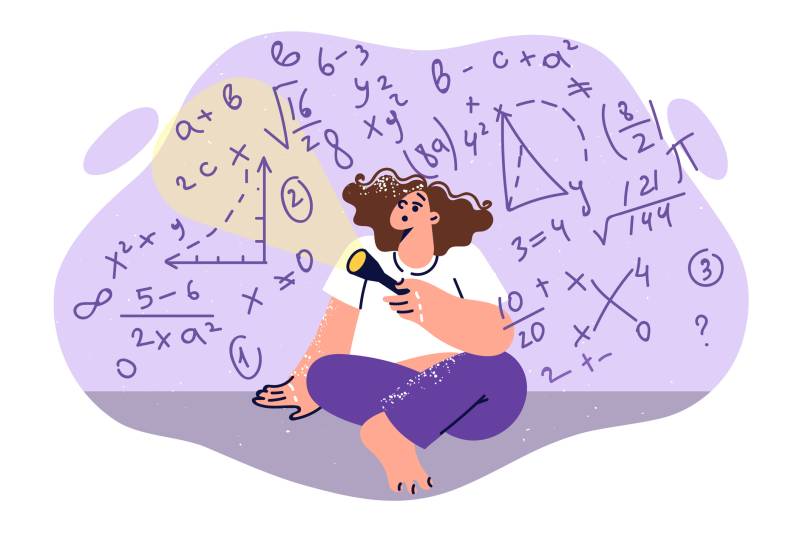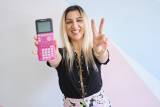“But when will I use this irl?” = “But why should I actually care?”
Distilled into one word, what they’re asking about is purpose. Students need to feel like the skills they are learning in your class serve a purpose. Immediately! For skills to serve a purpose to your students, those skills must be relevant to them either now, or in the very near future! Students don’t benefit from forced attempts to apply math to like, planet Earth, in general. Take questions such as “There are 2 trains moving toward each other at 60 km an hour; they’re 5 miles apart. How long will it take for them to pass each other?” or “Use sin law to figure out what angle a cable needs to be attached to the top of a roof in order to tether it to the ground.” They might be “practical applications” of math, but guess what? No one cares, thus rendering such questions as ones without purpose!
Purpose in your classroom can be found in two central ways to help motivate your students: math skills and math-adjacent skills.
Meaningful math-adjacent skills
Math-adjacent skills are skills that are built by doing math but that aren’t necessarily considered exclusively mathematical in nature many of which, like “reason abstractly and quantitatively” and “make sense of problems and persevere in solving them” are built into the math standards.
For example, when working on a challenging problem, students might try multiple methods to solve that problem, work with friends to get new perspectives, or make a mistake and start again. They are building math-adjacent skills like risk-taking, critical thinking, collaboration, and learning how to grow from mistakes. These are all meaningful skills that can be used in their real lives, right now! They can use these same skills when making new friends (risk-taking, collaboration), trying out for the soccer team (risk-taking, collaboration, growing from mistakes), or getting a part-time job (risk-taking, critical thinking, collaboration). Emphasizing that the math-adjacent skills they learn in your classroom will enhance their actual lives right now is a simple and effective way to motivate your students.
Meaningful math skills
It is a lot harder to convince your students that the math skills they are building in your class serve a purpose (you probably know this from experience!); therefore, you have to work a lot harder to use this as a motivation tactic! That doesn’t mean it can’t be done, but I totally get how hard it is, given that we have little to no control over the actual math content we teach.
What this means is that we need to find creative ways to connect this content to our students’ actual, lived experiences. One way to do that is by treating our content in culturally responsive ways. This might involve recognizing and incorporating diverse cultural perspectives, experiences, and examples into your curriculum so that students see themselves reflected and find the content meaningful to them. Another way to show students that the math skills they are learning serve a purpose in their lives is by using relevant examples (remember, relevance means it matters to them right now). Esther Brunat is a math teacher who is a total pro at doing this! Over the years, I’ve seen her students learn patterning and probability by exploring the latest trends and fads (like, why are so many people suddenly wearing Crocs again? Or how likely is it that in a group of 100 that at least one person will be wearing this hideous footwear, and does this stat differ by region?), learn all about money by creating their own imaginary small businesses, and learn how to graph by filming TikTok dances to identify how different equations visually move (and yes, she used this activity as an approach to summative assessment, which is genius if you ask me!).
Finally, one of the most effective ways to bring purpose to the actual math skills students are building in your classroom is by broadening the definition of “math” to include all of the skills we tend not to emphasize enough — skills that actually matter to your students. These include skills like estimating, trendspotting, navigating, budgeting, managing time, logical reasoning, making change, optimizing, making comparisons and literally solving any type of problem. When we talk about math in this way, kids have the opportunity to connect the math they’re learning to what brings them meaning, and also, kids are usually able to at least find one skill that they feel capable of and confident about, which is a huge win when it comes to motivation!




 Known as the Lady Gaga of math education, Vanessa is the founder and director of
Known as the Lady Gaga of math education, Vanessa is the founder and director of